
The Freedom to Dream: La Verrière at Fondation d’entreprise Hermès
La Verrière, the exhibition space of the Fondation d’entreprise Hermès in Brussels,…
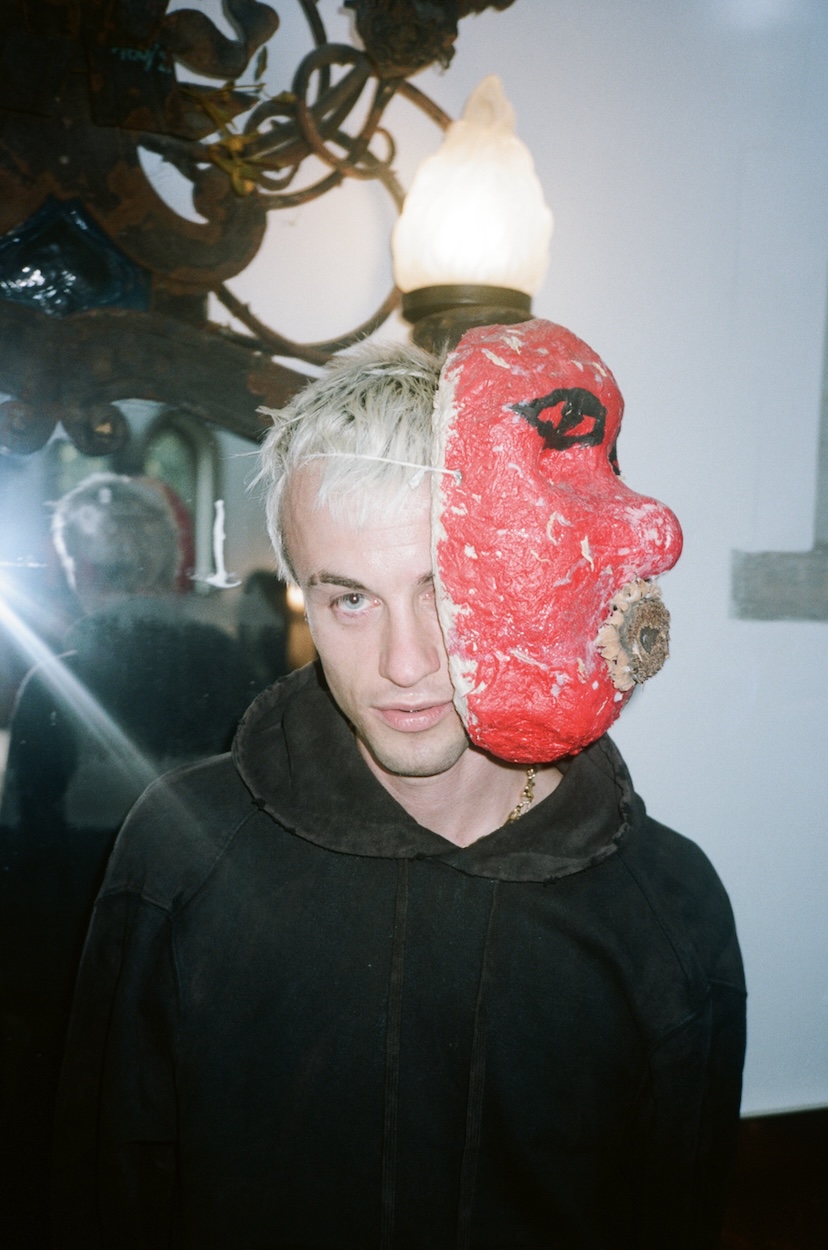
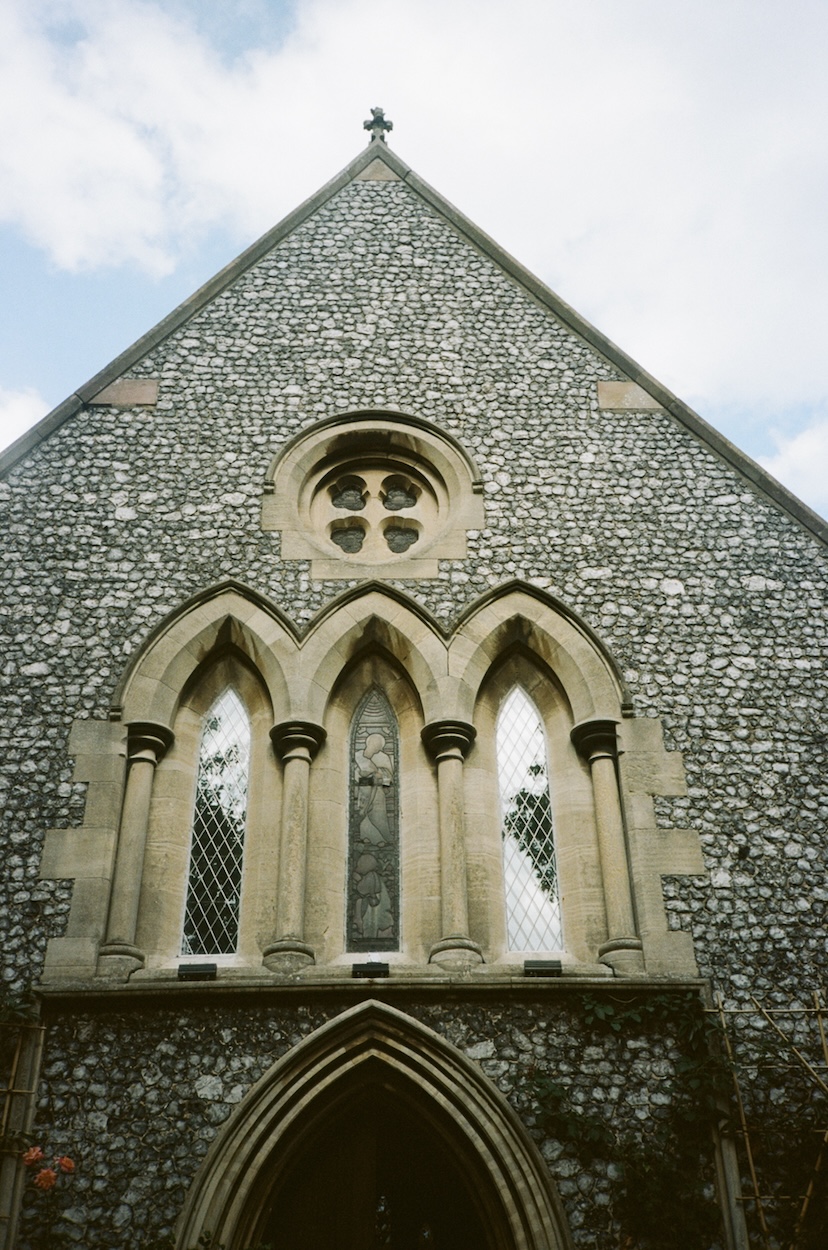
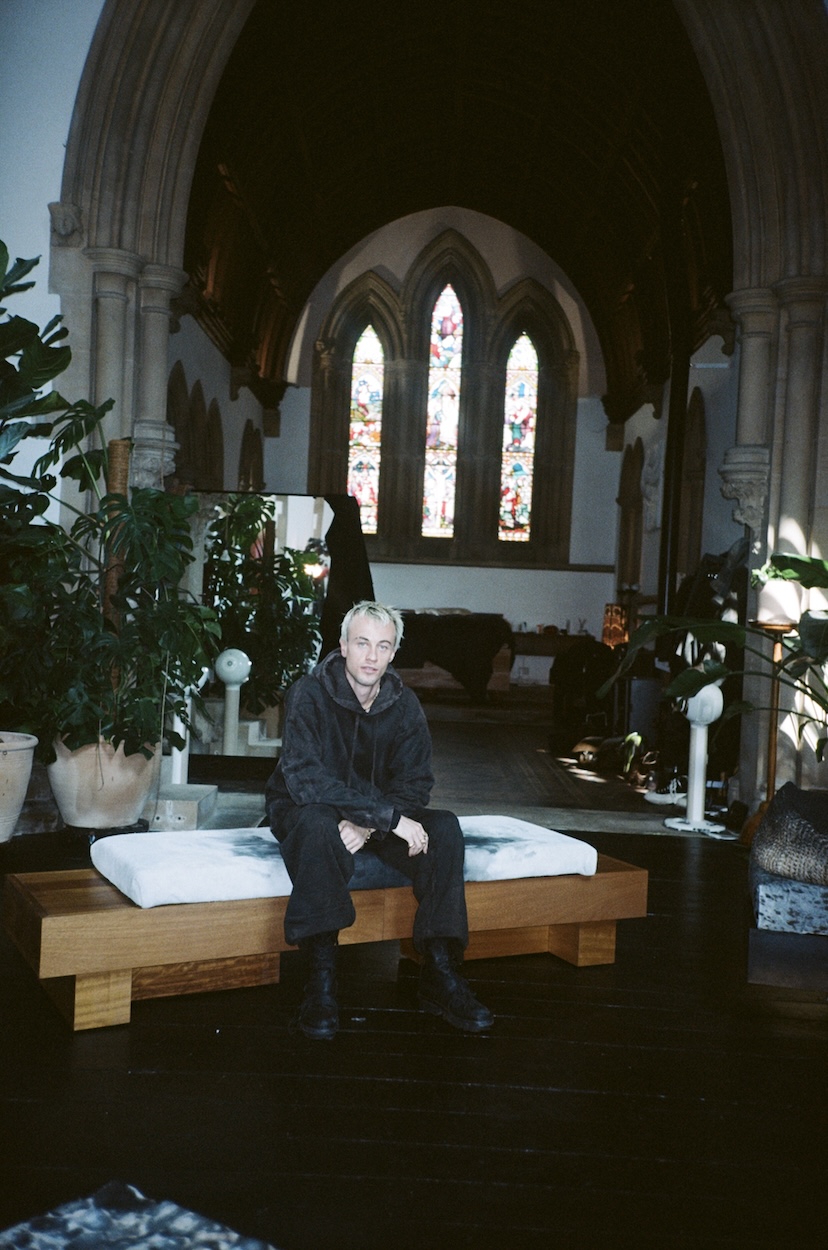

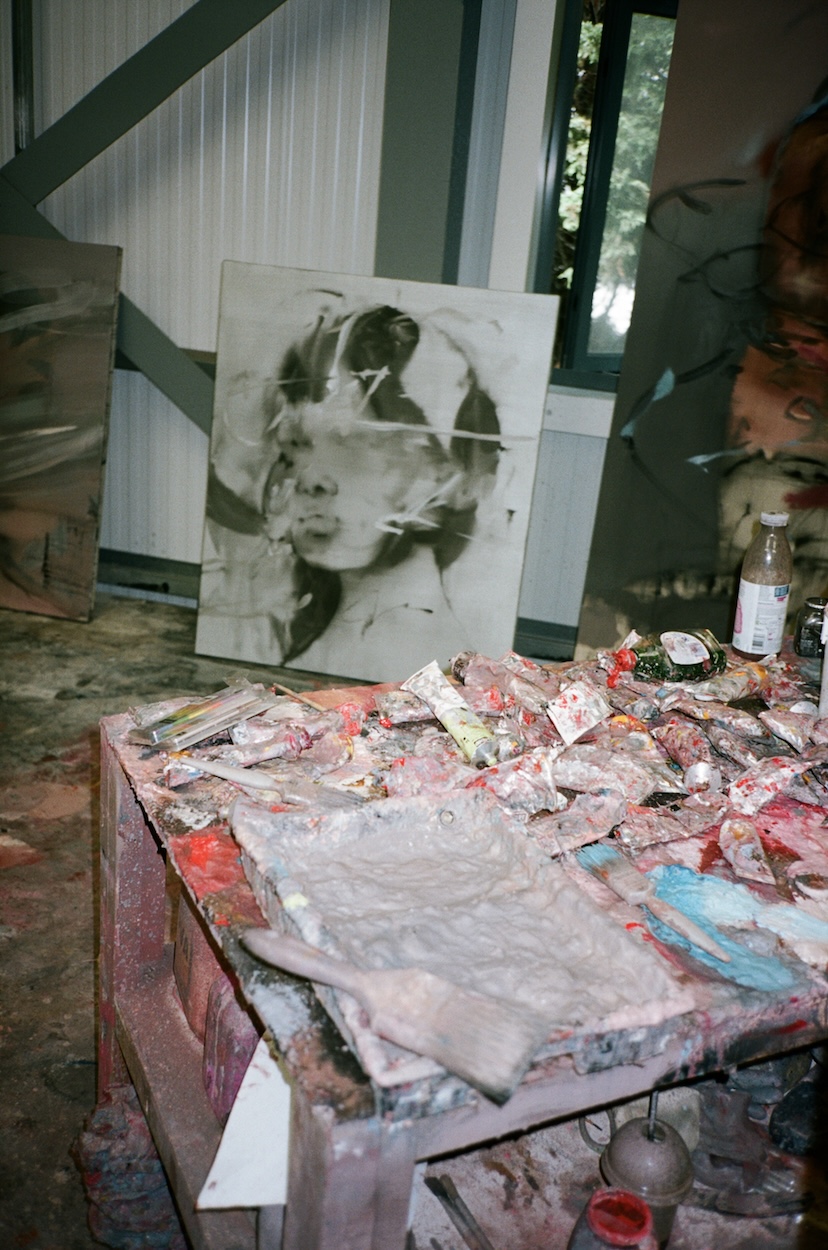
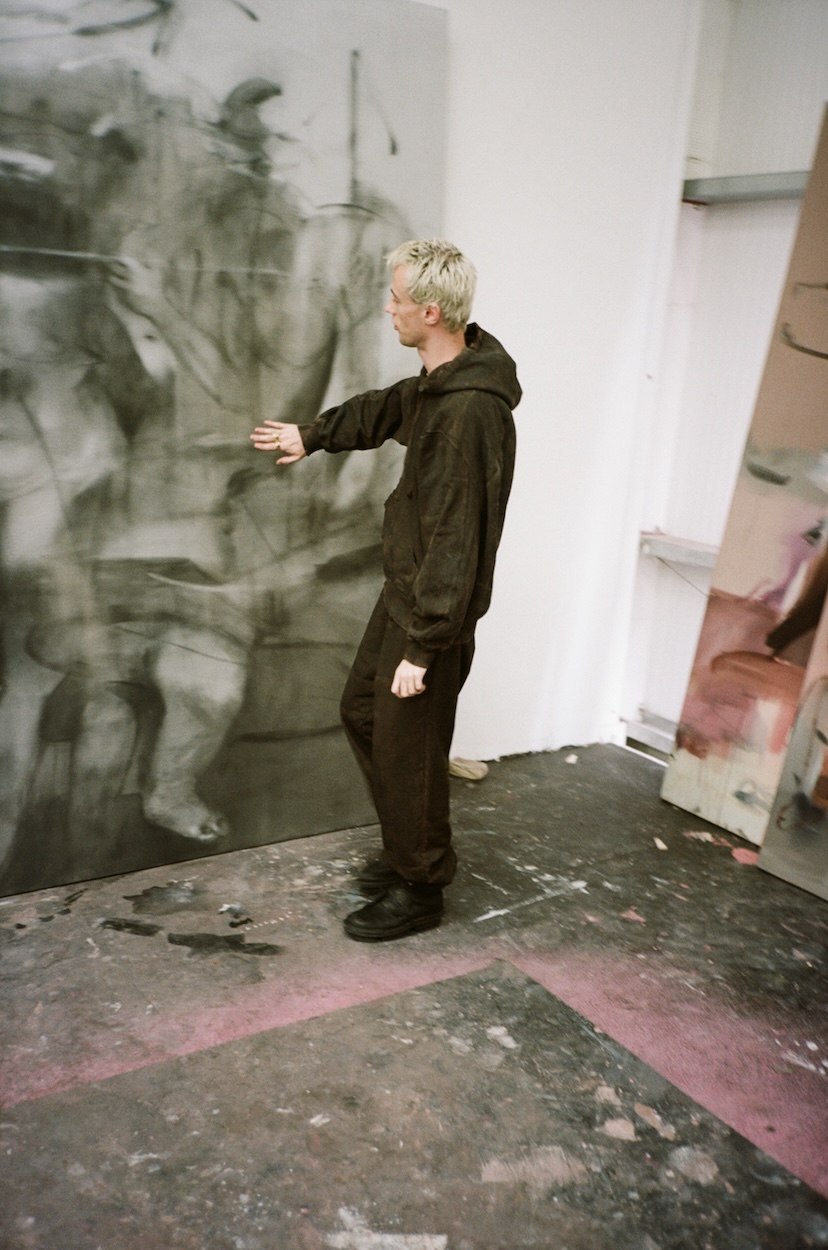
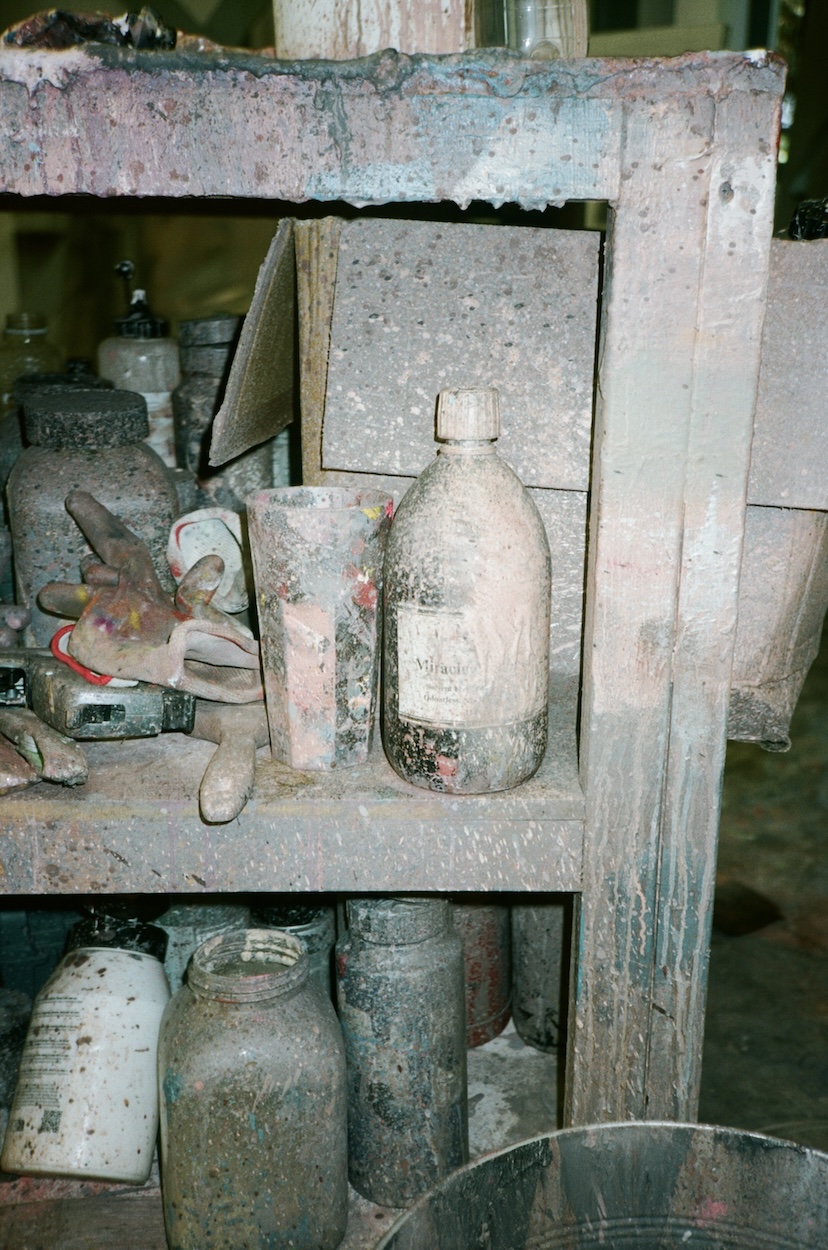
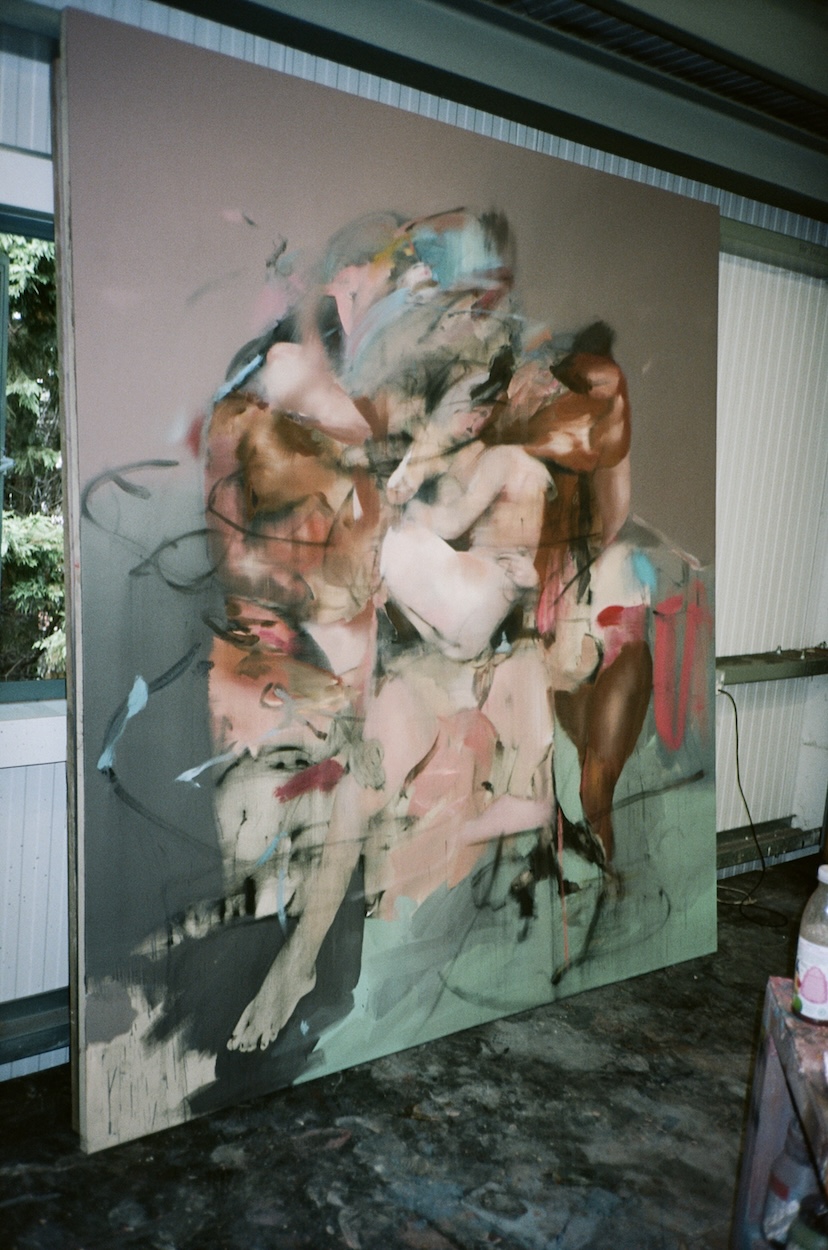
The stained-glass windows high over our heads begin to glow as warm afternoon light filters through them.
There’s elderflower pressé being poured at the kitchen counter and a collection of marrows from the vegetable garden sit on a rustic wooden table by the doorway to this charming small-town church. As the conversation turns to dance and the power of good choreography, you’d be forgiven for missing the thread that connects this bucolic village fête scene with the raw, borderline punk world of artist George Rouy.
But this is not a blink-and-you’ll-miss-it connection. In reality, the church that we’re in – Rouy’s Faversham home – is central to the world that he’s creating, perhaps offering more insight into his practice than even the nearby studio he paints in. Here in the church is where Rouy’s ability to subtly subvert the familiar becomes apparent.
We’re here just a week before his first show for Hauser & Wirth. It feels like a red cross on the calendar, with everything else fading to background noise as it nears. Even so, Rouy seems completely at ease. We’re lounging in the very centre of this wide-open church on low-slung furniture that Rouy has created. The pieces are deeply organic in texture and tone, it’s almost unsettling in how alive they feel beneath us with rough suede that’s warm to the touch and a stuffing that shifts slightly as you adjust your seat.
The choreography conversation deepens, Rouy is emphasising how emotional his collaborator Sharon Eyal’s work is, and asking aloud how a moving mass of bodies can become so captivating and stir so many individual responses. It’s an open-ended question that his new show The Bleed asks sincerely. The large-scale paintings are both crowded with forms and at the same moment, utterly abstract. There’s something both familiar and frustrating at first glance as the eye tries to connect disjoined hands to a swirling mass of limbs, and the brain then fights to fit these scenes into frescoes and familiar altarpieces. The religious iconography is no figment of imagination, alongside Bacon and Brown, throughout The Bleed Rouy cites imagery of Christ and church processions as inspiration. It’s where these classic silhouettes meet the raw human expression found in dance and the inescapable ever-presence of the online landscape and its accidental collages that Rouy’s world becomes most inviting.
Clean edges and unmistakable body parts push the works out of any cloudy dreamscape and into reality, albeit an unsettling one. The warm fleshy tones and very human scale drive home how alive they are. In Rouy’s studio, where the paintings sit side-by-side in close quarters, a curious spell starts to take shape. The writhing masses on each canvas seem to blur and merge, lifting and passing individual figures around the room from painting to painting. The dance is in full swing and the viewer has joined the choreography, and with it, entered Rouy’s world.

La Verrière, the exhibition space of the Fondation d’entreprise Hermès in Brussels,…
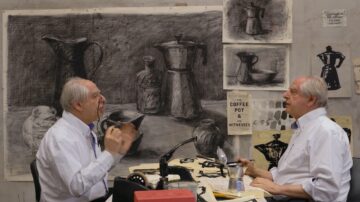
William Kentridge is a renowned artist from South Africa, using sculpture, drawing or…
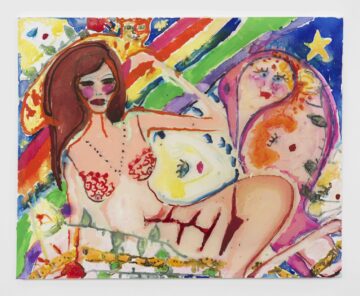
Paz de la Huerta presented Sacrifice, her second solo exhibition with Ruttkowski;68 in…